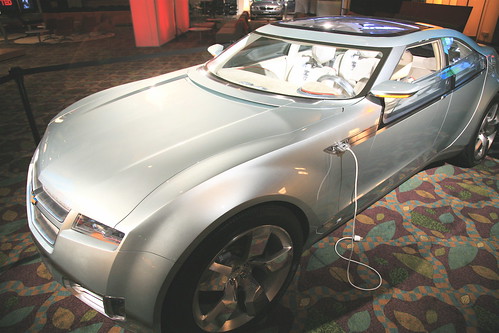(Source: AASHTO)
Rough Roads Ahead: Fix Them Now or Pay for It Later, a report released today by the American Association of State Highway and Transportation Officials (AASHTO) and TRIP, reports that one-third of the nation’s major highways, including Interstates, freeways and major roads, are in poor or mediocre condition. Roads in urban areas, which carry 66 percent of the traffic, are in much worse shape.

Extracts from the press release: Driving on rough roads costs the average American motorist approximately $400 a year in extra vehicle operating costs. Drivers living in urban areas with populations over 250,000 are paying upwards of $750 more annually because of accelerated vehicle deterioration, increased maintenance, additional fuel consumption, and tire wear caused by poor road conditions.
“The American people are paying for rough roads multiple times,” said Kirk T. Steudle, Director of the Michigan Department of Transportation, at a news conference held to release the report. “Rough roads lead to diminished safety, higher vehicle operating costs and more expensive road repairs. It costs $1 to keep a road in good shape for every $7 you would have to spend on reconstruction. It’s another drag on the economy.”
The report uses the latest government statistics to show pavement conditions in all 50 states and vehicle operating costs by state and urban areas. The report also finds that:
- 30 to 60 percent of the roads in the nation’s largest urban areas are in poor condition.
- 36 percent of the roads in the Detroit urban area are in poor condition compared to the Los Angeles area and surrounding communities, which have 64 percent of their roads in poor condition.
- 61 percent of rural roads are in good condition.
- 72 percent of the Interstate Highway System is in good condition, but age, weather conditions and burgeoning traffic are eroding ride quality.
“Our nation has invested $1.75 trillion in our public highway system over the past 50 years,” said John Horsley, AASHTO Executive Director. “We hope Congress will make it possible for the federal government to sustain its share of the increased investment needed to keep America’s roads in good condition. If not, it will cost the American people billions more later.”
The report points out that traffic growth has far outpaced highway construction, particularly in major metropolitan areas. The number of miles driven in this country jumped more than 41 percent from 1990 to 2007 — from 2.1 trillion miles in 1990 to 3 trillion in 2007. In some parts of the country, dramatic population growth has occurred without a corresponding increase in road capacity, placing enormous pressure on roads that, in many cases, were built 50 years ago.
“The federal stimulus program is providing a helpful down payment towards repairing some of the nation’s rough roads,” said Frank Moretti, TRIP’s Director of Policy and Research. “But it will take a significant long-term boost in investment by all levels of government to provide Americans with a smooth ride.”
The full report is available at http://roughroads.transportation.org, along with examples from states working to improve their highway systems, charts and photographs. Rough Roads is part of Are We There Yet? We Can Be!, AASHTO’s effort to build awareness and support for the nation’s transportation system.





